Japanese face massage is so much more than just another step in your skincare routine. Think of it as a wellness ritual, one that beautifully marries ancient traditions with a modern grasp of our own anatomy. The practice uses specific, gentle movements to kickstart circulation, get that lymphatic system draining properly, and melt away all the tension we hold in our faces.
It’s known for its incredible ability to help sculpt facial contours, dial down puffiness, and bring back that natural, healthy glow we're all after.
The Art and Science of Japanese Face Massage
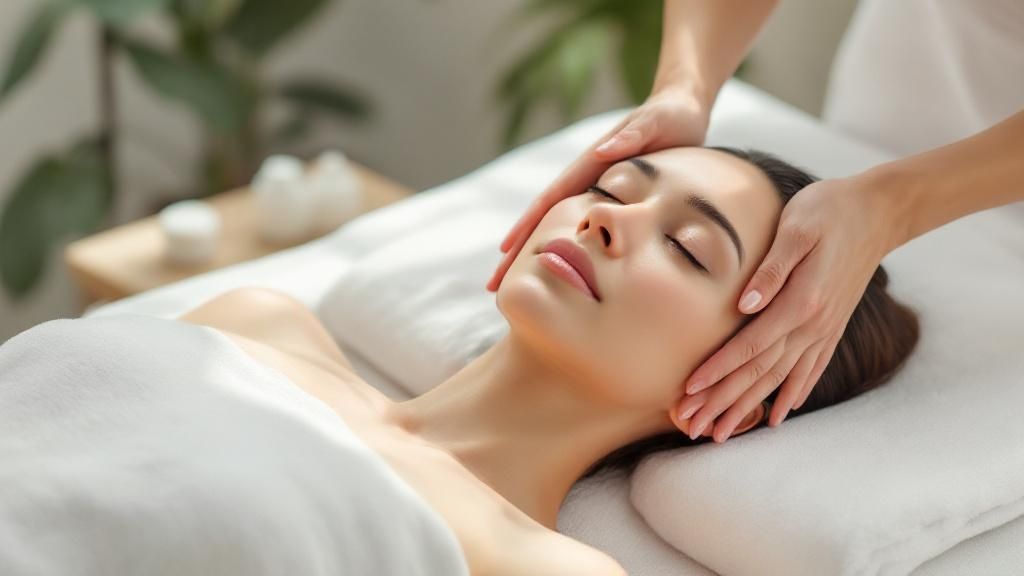
The entire philosophy behind Japanese face massage is rooted in one core belief: beauty is simply an extension of your overall health. It’s a world away from aggressive facial treatments. This method deeply respects the delicate structure of your face, using rhythmic, intentional strokes to get results. It’s not about yanking or pulling but working with your body’s natural systems.
This time-honored practice is what sets it apart from your standard facial rub. The techniques are carefully designed to stimulate everything from the surface of your skin right down to the underlying muscles and lymphatic pathways.
To get a clearer picture of what we're working with, let's break down the fundamental concepts.
Core Principles of Japanese Face Massage
This table gives you a quick snapshot of the "what" and "why" behind the techniques we'll be exploring.
| Principle | Objective | Primary Benefit |
|---|---|---|
| Lymphatic Stimulation | Encourage drainage of excess fluid & toxins | Reduced puffiness, clearer complexion |
| Muscle Relaxation | Release chronic tension in facial muscles | Softened expression lines, serene appearance |
| Circulation Boost | Increase blood flow to the skin's surface | Enhanced glow, improved nutrient delivery |
| Mindful Touch | Foster a connection between mind and body | Stress reduction, a more restorative ritual |
Understanding these pillars helps you see how each movement contributes to a bigger, more holistic result for your skin and well-being.
Why It Actually Works
The techniques you’re about to learn are all built on solid anatomical knowledge. It’s not just random rubbing. Many of the strokes you'll perform trace the exact pathways of your lymphatic system. This system is your body's waste disposal unit, and it's crucial for clearing out excess fluid and toxins from your tissues. When it gets a bit sluggish—which happens to all of us—you might notice puffiness, especially around the eyes and jaw. These gentle, directional massage movements give it a helping hand, moving that fluid along for a more defined, less swollen look.
Then there’s the muscle tension. You’d be surprised how much stress we hold in our faces. Clenched jaws, furrowed brows… sound familiar? Over time, that chronic tension can start to etch expression lines into our skin. A proper Japanese face massage helps those tense, contracted muscles finally relax, which softens their appearance and gives you a more peaceful, serene expression.
At its heart, this massage is a form of mindful self-care. It encourages a connection with your own body, transforming a routine into a restorative ritual that benefits both skin and spirit.
This unique focus on wellness and visible results has made the practice a global sensation. In fact, the global facial massager market was valued at around $1.79 billion in 2023 and is only expected to grow. The Asia Pacific region, with Japan at the forefront, is a huge driver of this trend, showing just how much these time-tested beauty rituals resonate worldwide.
Of course, your choice of massage medium is vital. A good quality oil or cream provides that essential "slip," preventing any friction or pulling on your delicate skin. As you explore the art of face massage, learning about different ingredients can really deepen your appreciation for the practice. For instance, you can dive into olive oil's benefits for skin wellness to see how what you use is just as important as how you use it.
Ultimately, this guide is here to demystify these techniques, making them simple and accessible for you to do at home. And if you're hungry for more, you can unlock more Japanese beauty secrets for radiant skin in our other articles.
How to Prepare for Your Massage Ritual
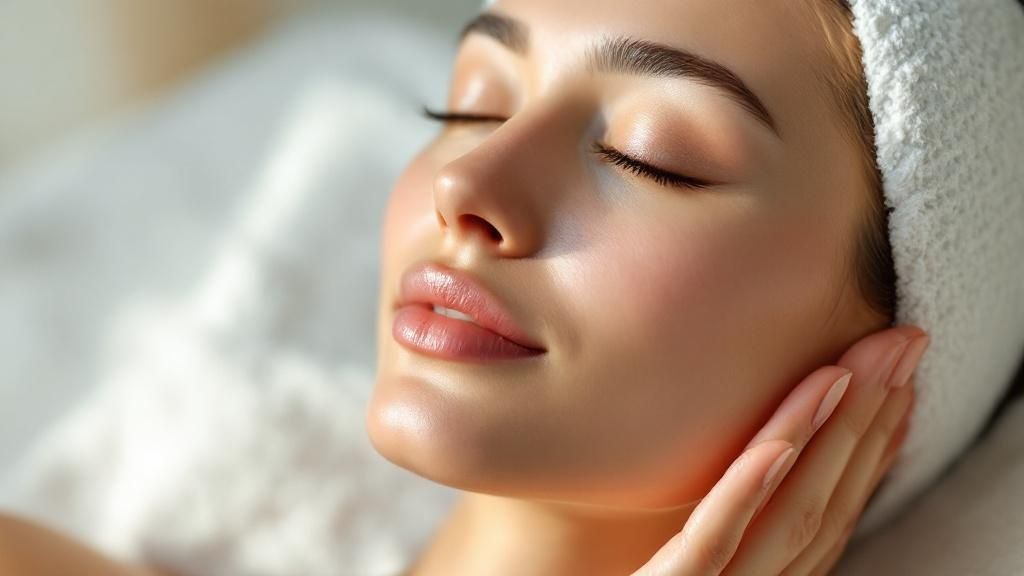
Before you even touch your face, remember that a proper Japanese face massage is a full-blown ritual. The preparation is just as vital as the massage itself. Think of it as the opening act—it sets the stage for deep relaxation and ensures you get the beautiful results you’re after.
The absolute first step? Start with a perfectly clean canvas. Your skin needs to be completely free of makeup, sunscreen, and the general grime of the day. Grab your favorite gentle cleanser and wash everything away so your fingers can work their magic directly on the skin, not pushing dirt into your pores.
After cleansing, gently pat your skin dry with a soft towel. No aggressive rubbing! We want to keep irritation at bay.
Selecting Your Massage Medium
Okay, your skin is clean and ready. Now for a step that can make or break your entire massage: choosing your medium. This is what provides the necessary "slip" that allows your fingers or tools to glide effortlessly across your skin. Without it, you’ll end up pulling and tugging on that delicate facial tissue, which completely defeats the purpose.
A high-quality facial oil is always my top recommendation. It not only creates the perfect slick surface but also packs a nourishing punch for your skin. Here are a few fantastic, time-tested options:
- Camellia Oil (Tsubaki): A true Japanese classic. It’s wonderfully lightweight, full of antioxidants, and absorbs beautifully without feeling greasy.
- Jojoba Oil: This one is a gem because its structure is so similar to our skin’s natural oils. That makes it a safe bet for nearly all skin types, even if you’re prone to breakouts.
- Squalane Oil: Sourced from olives or sugarcane, squalane is incredibly light and hydrating. It gives you amazing slip and is non-comedogenic, so it won’t clog pores.
Pour about a nickel-sized amount of oil into your palms and warm it up by rubbing your hands together for a moment. Then, gently press the oil onto your face and neck, making sure you have an even layer everywhere.
If there's one mistake I see people make, it's not using enough oil. Your skin should feel genuinely slick, not just a little moisturized. If you feel even the slightest drag as you massage, stop and add more.
Creating a Tranquil Atmosphere
Finally, let’s talk about your environment. You don't need a spa-grade setup, but a few small tweaks can transform your space into a personal sanctuary. Dim the lights, put on some calming music—whatever helps you switch off. The most important thing is to make sure you won't be interrupted for the next 10-15 minutes.
Just before you begin the massage, take a moment for yourself. Close your eyes and take three deep, slow breaths. I like to inhale through my nose for a count of four, hold it for four, and then exhale slowly through my mouth for a count of six. It’s a simple trick that instantly calms the nervous system, relaxing your mind and, just as importantly, your facial muscles.
Now, you’re truly ready to begin.
Mastering Foundational Massage Movements
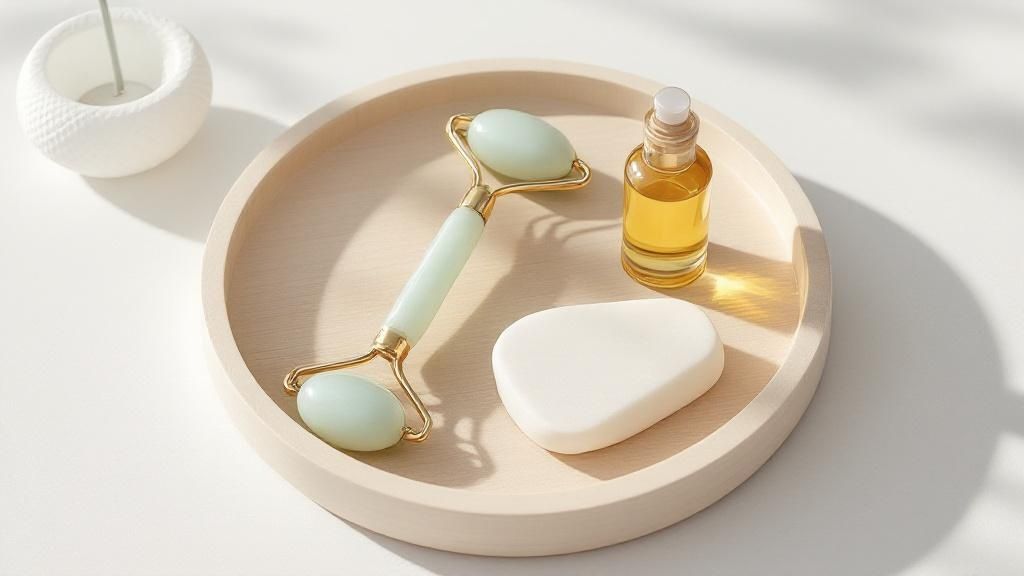
This is where the real magic happens. Your hands are about to become your most powerful skincare tool. Now that you’re prepped and ready, we can get into the core movements of Japanese face massage. Don't feel pressured to memorize everything at once; the goal is to get a feel for each technique and understand its purpose.
We'll break these down into simple, repeatable actions. With a little practice, they’ll become second nature. Each stroke has a specific job, from waking up your skin to coaxing your muscles into a state of deep release.
Warming Up with Effleurage
Every massage should begin with effleurage. While the term is French, the technique is a universal starting point. It involves long, sweeping, rhythmic strokes designed to warm up the facial tissue and, most importantly, kickstart lymphatic flow. Think of it as gently saying good morning to your face before the real work begins.
To do it right, use the flats of your fingers or even your entire palm. The pressure should be light but firm—just enough to feel a connection with the skin and the muscles underneath.
- Movement Example: Start at your collarbone and sweep your hands up the sides of your neck. Continue along your jawline and up toward your temples. This upward and outward motion is a fundamental principle you'll use over and over.
- Pacing: Slow and steady wins the race here. Imagine you're smoothing a silk cloth over your skin. The rhythm is what makes it so relaxing and effective.
This first step is crucial. It preps your skin, distributes your massage oil evenly, and sends a signal to your nervous system that it’s time to relax.
Releasing Tension with Petrissage
Next up is petrissage. This movement is all about gentle kneading, pinching, and rolling of the muscles. Its main job is to release that deep-seated tension we all hold in our faces, especially around the jaw and brows. It's fantastic for softening tight muscles that can lead to expression lines.
Unlike the broad strokes of effleurage, petrissage is much more targeted. You’ll use your fingertips and thumbs to gently grasp and lift the muscle tissue.
The secret to effective petrissage is to work the muscle underneath, not just pull on the skin. If you find yourself just pinching skin, ease up your grip and focus on going a little deeper.
This technique works wonders on the jawline. So many of us clench our jaws without even realizing it, which can cause tightness and even headaches. A few moments of gentle kneading along the masseter muscle (that big muscle at the back of your jaw) can bring incredible relief.
The desire for at-home rituals like this has fueled some amazing market growth. The global facial massager market is projected to jump from $1.9 billion in 2024 to an estimated $3.3 billion by 2034. This boom shows a huge global shift toward effective, non-invasive skincare, with Japanese techniques leading the pack.
Working the Delicate Areas
The skin around your eyes is the thinnest on your entire body, so it needs an extra-gentle touch. Your ring finger is your best friend for this job, as it naturally applies the lightest pressure.
For the under-eye area, a gentle tapping or "piano-playing" motion is perfect. This technique, called tapotement, helps reduce puffiness and boost circulation without dragging that delicate skin.
- Actionable Tip: Start at the inner corner of your eye and tap lightly along the orbital bone, moving out toward your temple. Repeat this a few times.
- For the Brow Bone: You can use your ring finger to make small, gentle circles on your temple. Then, sweep it lightly under your brow bone from the inside out.
These movements are the building blocks of a complete Japanese face massage. To see how these practices fit into a wider beauty philosophy, take a look at our guide to the complete Japanese skincare steps to radiant skin. Once you master these foundational strokes, you’ll have the confidence to build a full, effective routine.
A Complete Japanese Face Massage Routine
Alright, let's put all those foundational movements together. I'm going to walk you through a complete, flowing routine you can start using tonight.
This whole sequence should take you about 10 minutes. The key isn't to be perfectly rigid but to find a rhythm that feels good to you. Just remember to use enough oil so your fingers glide smoothly, and keep your touch gentle but intentional. Think of it as a mindful ritual, where each movement flows gracefully into the next.
Beginning with Lymphatic Activation
Every single Japanese face massage I’ve ever learned or taught starts right here: at the neck and collarbone. This is your body's main drainage point, and waking it up first is crucial. It gives all the fluid we're about to move a clear path to exit.
Using the flat pads of your fingers, make three long, sweeping glides from just behind your earlobes, down the sides of your neck, all the way to your collarbone. The pressure should be light—you're just clearing the way. Next, place your fingers flat on your collarbone and give three gentle little pumps to stimulate the lymph nodes there.
Honestly, don't skip this part. It’s like trying to drain a sink with the plug still in. It’s a simple but non-negotiable first step.
Sculpting the Jawline and Cheeks
Now that the pathways are open, we can move up to the lower face. This is where so many of us hold tension and see puffiness, so these next moves feel incredible while helping to define the jaw and lift the cheeks.
Let's start with the jawline. Make a loose fist with both hands and rest your knuckles on either side of your chin. Now, glide them firmly up along your jawbone, moving out toward your earlobes. Do this three to five times. It’s fantastic for releasing that tension you get from clenching your jaw.
Next up, the cheeks. Using your index and middle fingers, sweep from the corners of your mouth up and out, following the natural curve of your cheekbones toward your temples. This upward motion is everything when you're aiming for a more lifted look.
Personal Tip: I love to pause for just a second when I reach my temples and apply very gentle pressure. It’s a key acupressure point that can help with tension headaches, and it just feels so soothing after a long day staring at a screen.
Addressing the Nose and Eye Area
Time to move to the more delicate center of your face. For this part, your touch should become lighter and more precise.
For the area around your nose, use your middle fingers to trace down the sides of your nose. Then, sweep them outwards, just underneath your cheekbones. This simple move helps clear congestion and can even make your sinuses feel a little clearer.
When it comes to the eyes, your ring finger is your best friend—it has the lightest touch.
- Under the Eyes: Start at the inner corner and use a gentle tapping or "pitter-patter" motion along the orbital bone, moving out towards your temple. This is amazing for stimulating circulation and helping with dark circles.
- The Brow Bone: With that same ring finger, gently sweep from the inner corner of your brow bone outward. You can finish by making small, soothing circles right at your temples.
These movements are my go-to for reducing morning puffiness and waking up tired-looking eyes.
Finishing on the Forehead
We finish our massage on the forehead, an area that holds so much of our expression and tension.
Place the fingers of both hands flat in the center of your forehead. Glide them outward toward your temples at the same time, like you're smoothing out a piece of silk. Repeat this five times.
Then, using a gentle zigzag motion with your fingertips, work your way across your entire forehead. This helps relax the frontalis muscle, which can soften the look of those horizontal lines.
To wrap up the entire routine, we circle back to the very beginning. Perform three final, long sweeps down the sides of your neck to your collarbone. This final step ensures all the toxins and excess fluid you've just worked on are flushed down toward your lymphatic drainage points.
This massage fits beautifully into any daily regimen. If you're looking for more general advice on building a solid skincare practice, you might find these simple men's skincare routine tips helpful.
After your massage, your skin is perfectly prepped and receptive. To really lock in the benefits and give your skin an extra dose of hydration, I highly recommend following up with a face mask. You can check out some of our favorites in this guide to the 7 best Japanese face masks for radiant skin.
Choosing the Right Massage Tools
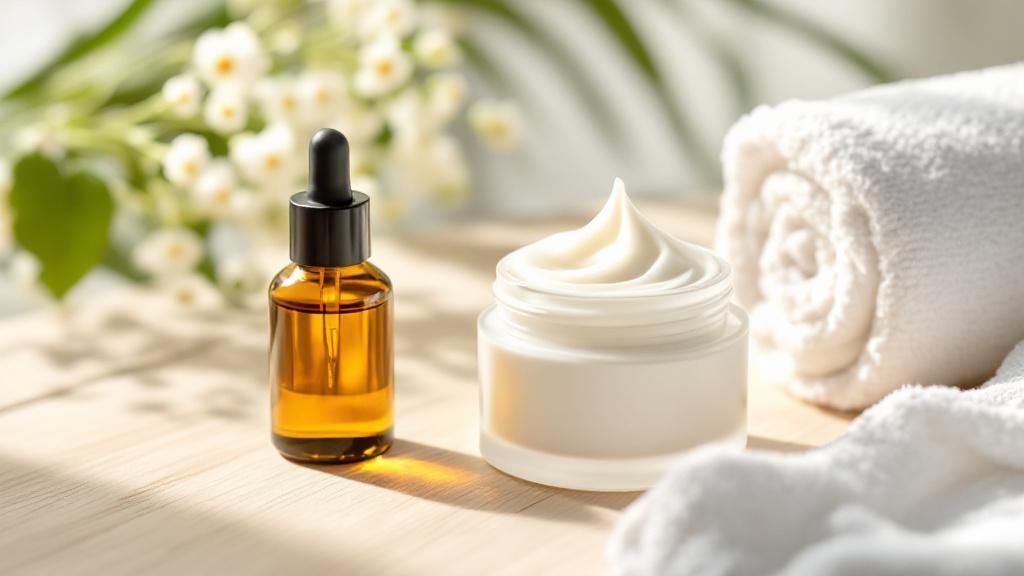
While your hands are easily the most essential tools in your skincare arsenal, the right device can absolutely elevate your Japanese face massage experience. I get it, the world of facial tools can feel a bit overwhelming at first. You've got everything from traditional stones to futuristic-looking gadgets, but they each have a specific job to do.
Let's demystify some of the most popular options. Think of it this way: the hand techniques you’re learning are the heart of the practice. These tools are specialized enhancers that let you target specific concerns with much more precision.
Traditional vs. Modern Tools
On one side, you have the time-tested manual tools that have been used for generations. A perfect example is the Gua Sha stainless facial lifting tool, which is incredible for deep tissue work and lymphatic drainage. Its unique shape is just perfect for sculpting along the jawline and cheekbones, giving you a deeper release than your fingers can achieve on their own.
Then you have the more advanced electronic devices. A microcurrent tool, for instance, sends tiny, painless electrical impulses into your facial muscles. Over time, this helps tone and firm them for a more lifted look. A heated jade roller does something different entirely, using gentle warmth to boost blood flow and help your expensive serums and creams absorb more effectively.
The most expensive tool isn't always the best one for you. I always tell people to focus on quality, safety, and what aligns with your personal skin goals rather than just chasing the latest trend.
This growing interest in specialized tools isn't just anecdotal. The Japanese facial massage and beauty device market has seen some serious growth, with sales revenue climbing from $54.7 million to $80.9 million in recent years. This is all part of a wider Asia Pacific boom where Japan holds a significant 10.1% of the market—a real testament to its long, respected tradition of meticulous skincare.
So, how do you choose? It really comes down to what you want to achieve.
- For Puffiness & Drainage: A traditional Gua Sha or a simple face roller is fantastic.
- For Muscle Toning & Lifting: A microcurrent device is specifically designed for this.
- For Better Product Absorption: A heated roller or an ultrasonic infuser can make a noticeable difference.
No matter which tool you choose, the techniques you use with it are what truly matter. For a handpicked selection and more detailed comparisons, check out our guide on the top Japanese face massage tools for glowing skin. It’s a great resource for finding the perfect partner for your massage ritual.
Got Questions About Japanese Face Massage?
It's totally normal to have a few questions when you're trying a new skincare ritual. In fact, it's smart to be curious! I've put together answers to some of the most common things people ask about Japanese face massage. My goal here is to help you feel completely confident as you get started.
We'll tackle the big ones, like how often you should be doing it for real results and what to do if your skin is sensitive or breaking out.
Finding Your Rhythm: Frequency and Results
For those sculpted, lasting benefits, consistency is everything. You'll want to aim for a Japanese face massage 3-5 times per week. Trust me, a focused 10-minute session a few times a week blows a long, once-a-month massage out of the water when it comes to defining your features and kicking puffiness to the curb.
Not seeing changes right away? Don't panic. The effects build up over time. It can often take 3-4 weeks of consistent practice before you start noticing a real difference. If you're feeling stuck, check two things: first, make sure you’re using enough oil for a smooth glide without pulling your skin. Second, check your pressure—it should feel firm, but never, ever painful.
The biggest mistake I see people make is giving up too soon. Think of this as a workout for your face. You have to stick with it to see the results.
How to Adapt for Your Skin Type
"Can I still do this massage if I have acne or sensitive skin?" I get this question all the time. The answer is a definite yes, but you'll need to make a few smart adjustments.
If you're dealing with active, angry breakouts, you'll want to avoid massaging directly on top of them. That could just make the irritation worse. Instead, concentrate your massage on your neck and along the jawline. This still gets the lymphatic drainage going, which can help calm down inflammation across your entire face.
For those with sensitive skin, the secret is a lighter touch. Use very gentle pressure and choose a simple, hypoallergenic oil. And as always, patch-test any new product before you go all-in. An inside-out approach can also be a game-changer; for instance, many people find the 8 benefits of drinking matcha really help calm their skin from within.
Ready to explore the finest in Japanese beauty? Buy Me Japan offers a curated selection of premium skincare and cosmetics. Shop our collections and discover your new favorites today!
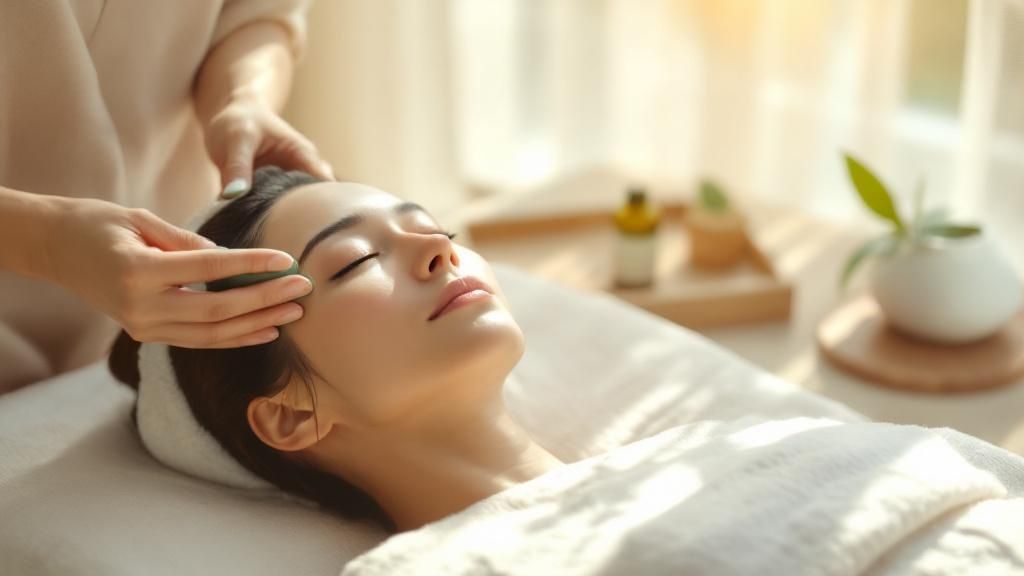
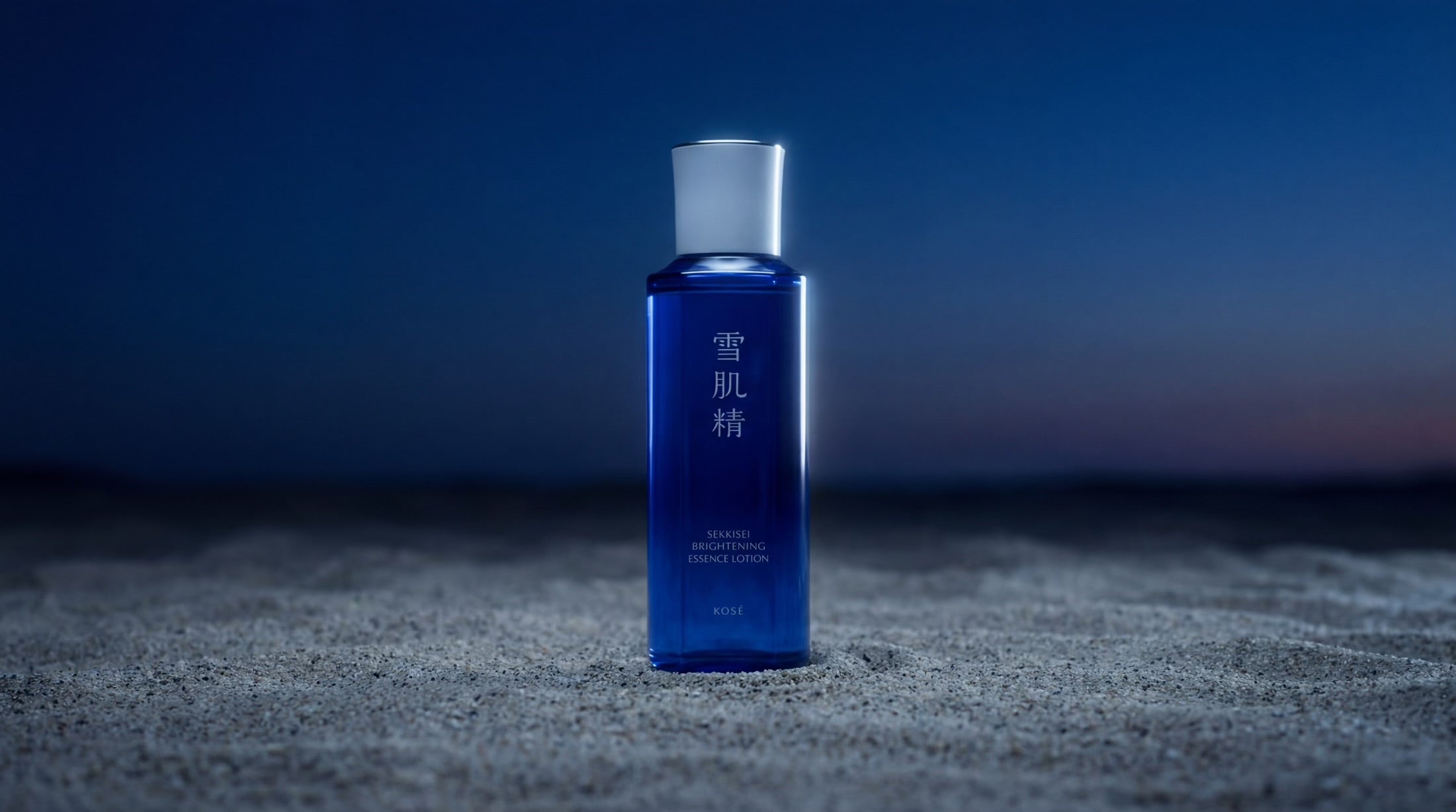
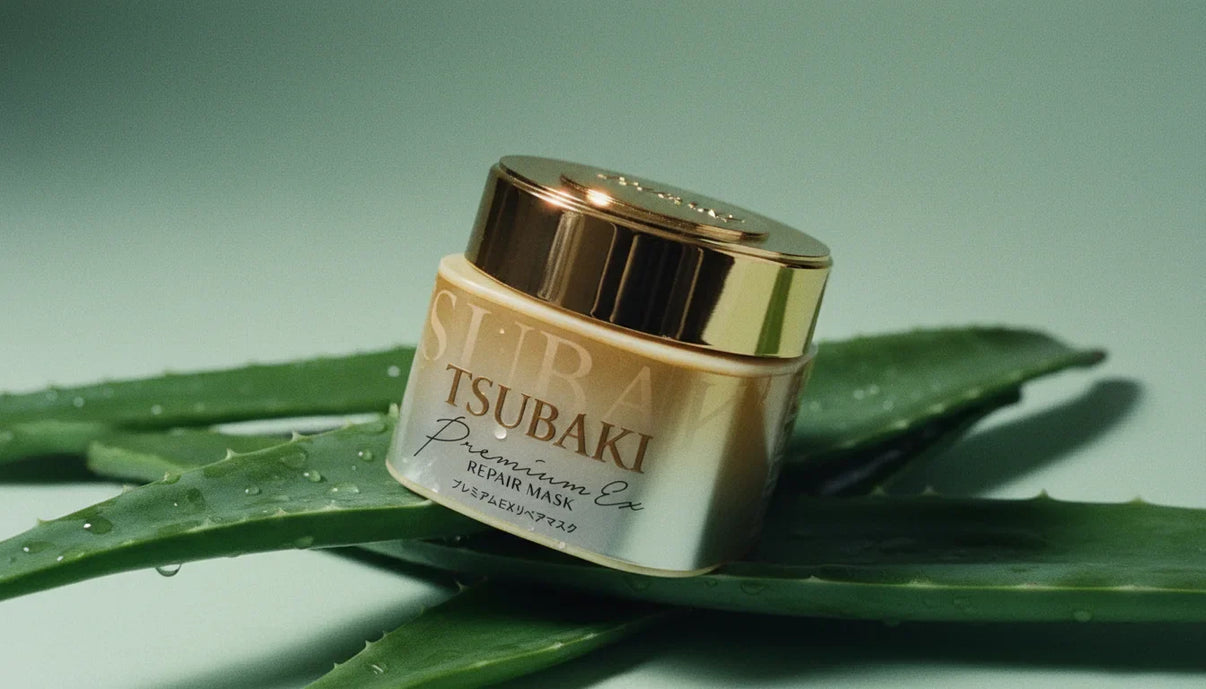
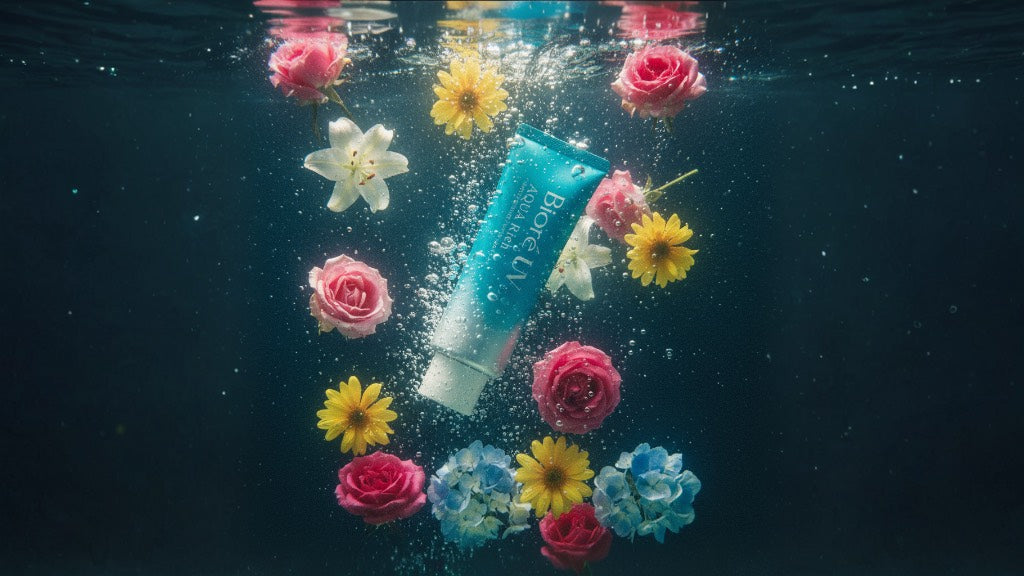
Share:
How to Layer Serums for Maximum Skin Benefits
The Artful History of Geisha Makeup